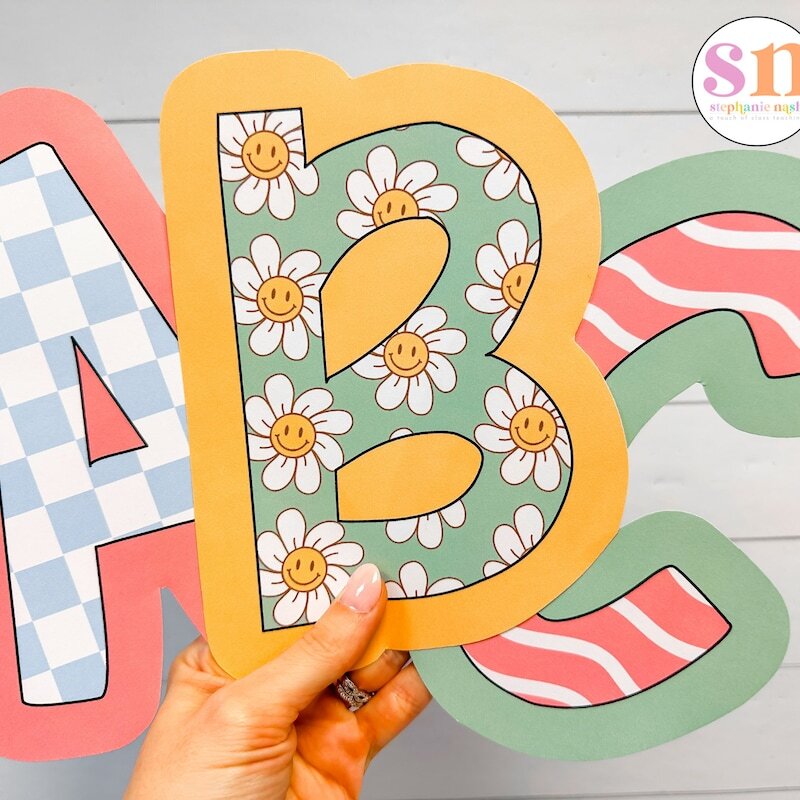Ending a meditation session is just as crucial as beginning one. A mindful transition can enhance the benefits of your practice, allowing you to carry calmness and focus into your daily activities. This guide provides a comprehensive framework for a smooth and effective conclusion, covering everything from physical actions to emotional considerations and environmental factors.
This detailed guide explores the importance of a mindful transition out of meditation, encompassing various techniques and considerations to optimize your experience. We will delve into specific steps for each stage, offering practical advice to help you cultivate a more integrated and fulfilling meditation practice.
Preparing for the Transition
A mindful transition out of meditation is crucial for a seamless return to daily activities. It allows the benefits of the meditative state to gradually integrate into the waking mind, promoting a more balanced and focused approach to life. This process can significantly enhance the overall experience and lasting impact of meditation practice.A proper preparation for the end of a meditation session is as important as the session itself.
It involves both physical and mental adjustments to avoid abrupt shifts in consciousness and facilitate a smooth return to your daily routine.
Importance of a Mindful Transition
A mindful transition is vital for maintaining the positive effects of meditation. The practice of meditation cultivates a state of awareness and emotional regulation. Without a proper transition, these benefits may dissipate quickly, potentially hindering the desired outcomes. A gradual return to everyday consciousness allows the meditative state to influence and inform your actions and responses throughout the day.
Step-by-Step Guide for Preparing for the End
This step-by-step guide Artikels a structured approach to ending a meditation session. Each step focuses on easing the transition back to daily life.
- Acknowledge the End: Become aware of your intention to conclude the meditation. This simple acknowledgment initiates the transition process.
- Gentle Movement: Gradually bring awareness to your body. Begin with small, gentle movements, like wiggling your fingers and toes. This helps to re-engage with your physical presence.
- Deep Breathing: Take a few slow, deep breaths, focusing on the sensation of the breath entering and leaving your body. This helps to anchor you in the present moment as you prepare to return to activity.
- Mindful Stretching: Gently stretch your body, allowing your muscles to release any tension accumulated during the session. This helps to increase circulation and promote a feeling of relaxation and ease.
- Inner Reflection: Spend a few moments reflecting on the experience. Notice any insights or sensations you experienced during the meditation. This helps to integrate the meditative state into your daily awareness.
- Gradual Opening: Slowly open your eyes, taking your time. This gentle transition helps avoid abrupt shifts in consciousness and aids in maintaining a state of awareness.
Physical and Mental Preparation
Physical and mental preparation are essential for a smooth transition. Physical actions help to re-engage with your body, while mental actions allow for a gradual return to your daily tasks.
- Physical Posture: Gradually adjust your posture, preparing to sit upright and resume your usual activities. Pay attention to the subtle movements of your body.
- Mental Focus: Shift your focus from the internal stillness of meditation to the external world. This gradual shifting helps to prevent mental fogginess or disorientation.
Examples of Mindful Actions
Mindful actions can be integrated into the preparation process, enhancing the transition.
- Gratitude: Take a moment to acknowledge and appreciate something positive in your life.
- Intention Setting: Consider a small intention for the day ahead. This can provide a sense of direction and purpose.
- Self-Compassion: Practice self-compassion as you transition, acknowledging any feelings or sensations without judgment.
Different Types of Meditation and Ending Procedures
Different types of meditation may benefit from slightly adjusted ending procedures. This table provides a general overview.
| Type of Meditation | Specific Ending Procedures |
|---|---|
| Mindfulness Meditation | Focus on gradual opening of senses and gentle return to awareness. |
| Transcendental Meditation | Follow the specific instructions provided by a certified teacher. |
| Vipassanā Meditation | Pay attention to physical sensations as you return to everyday life. |
| Loving-Kindness Meditation | Extend feelings of love and kindness to yourself and others as you transition. |
Returning to Awareness

Returning to a state of full awareness after meditation requires a mindful approach, avoiding abrupt transitions that can disrupt the benefits of the practice. This involves a gentle and gradual process that allows the mind to smoothly transition from a focused, introspective state to the present moment. A well-structured return to awareness process can enhance the overall meditative experience and facilitate a smoother integration of mindfulness into daily life.Transitioning from deep meditative states to everyday consciousness requires careful attention to the subtle shifts in mental and physical states.
A sudden jolt from deep relaxation can leave one feeling disoriented and potentially disrupt the meditative benefits. A deliberate and gentle re-engagement with the environment is crucial for a positive post-meditation experience.
Techniques for Transitioning
Different techniques can be employed to facilitate a smooth transition from deep meditation to daily life. These methods focus on gradually bringing the senses and awareness back to the present moment, ensuring a seamless integration into the surrounding environment. Examples of such techniques include a gentle physical movement, a deep breath, and a mindful shift in focus.
Methods for Re-engaging with the Environment
Several methods can be employed for re-engaging with the environment after meditation. These methods vary in their approach, but all share the common goal of gradually restoring awareness to the present moment. It’s essential to select a method that aligns with personal preferences and the individual’s current state of mind.
- Mindful Movement: Gently shifting one’s body, such as stretching limbs or slowly opening eyes, helps to re-engage the physical senses. This process aids in reconnecting with the present body awareness, fostering a smoother transition from the meditative state. For instance, a gentle stretching of the arms and legs or a slow rotation of the neck can be beneficial.
- Deep Breathing: Taking slow, deliberate breaths is a powerful tool for anchoring the mind in the present. Incorporating deep breathing exercises can help bring attention back to the physical body, which often acts as an anchor in the present moment. This helps the mind transition smoothly from a focused meditative state to a more alert state.
- Mindful Observation: Gradually shifting attention to the surroundings, such as sounds, sights, and sensations, helps to re-establish contact with the external world. For example, observing the light filtering through a window, the sounds of traffic, or the feel of the chair beneath one’s body can aid in re-integrating with the present environment. This gradual process of observation anchors the mind in the present.
Pitfalls of Abrupt Transitions
Abrupt transitions from meditation can lead to feelings of disorientation, mental fog, or a sense of detachment from the present moment. These negative effects can potentially diminish the benefits of the meditation practice.
- Disorientation: A sudden return to the environment can lead to a feeling of being disconnected from the present moment. This can manifest as a momentary feeling of disorientation, where one feels detached from their surroundings and their body.
- Mental Fog: A rushed transition can result in mental fogginess or a lack of clarity, making it challenging to focus on tasks after meditation. This can potentially hinder productivity and daily tasks.
- Distraction: A jarring transition can cause the mind to become easily distracted by external stimuli, hindering the ability to focus on present-day activities.
A Step-by-Step Procedure for Returning to Awareness
This step-by-step procedure guides practitioners through a gradual return to awareness after meditation, promoting a smoother and more beneficial transition.
- Gentle Movement: Begin by gently shifting your body, perhaps stretching a limb or moving your fingers and toes. This helps to re-engage the physical senses and bring awareness back to the body.
- Deep Breath: Take a few deep, conscious breaths, focusing on the sensation of the breath entering and leaving your body. This helps to anchor the mind in the present moment.
- Mindful Observation: Slowly bring your attention to the sounds, sights, and sensations around you. Observe the environment without judgment, allowing your senses to re-engage with the present moment.
- Gentle Opening of Eyes: Slowly open your eyes, taking a moment to adjust to the light and surroundings. Allow yourself to transition gradually to your surroundings.
- Mindful Transition: Take a moment to reflect on the experience and allow yourself to slowly reintegrate into your activities. Notice any subtle shifts in your mental and emotional state.
Physical Actions for Ending
Concluding a meditation session effectively involves more than just mentally transitioning back to awareness. Physical actions play a crucial role in easing the body back into daily activity, preventing lingering feelings of disorientation, and promoting a smooth return to your surroundings. This section details appropriate physical cues and gentle movements to facilitate a harmonious exit from your practice.
Physical Cues for Ending
Proper physical cues signal the end of a meditation session and gently guide the body back to a state of readiness for daily activities. These cues help to avoid sudden shifts in posture or movement, minimizing the risk of dizziness or discomfort.
- Gentle Stretching: Initiating a series of gentle stretches, focusing on areas held in a particular posture during meditation, helps to restore circulation and flexibility to the body. Examples include neck rotations, shoulder rolls, and gentle torso twists.
- Slow Opening of Eyes: Gradually opening the eyes, rather than jolting them open, provides a smooth transition from the internal focus of meditation to the external world.
- Deep Breathing Exercises: Deep, conscious breaths after meditation can help to re-oxygenate the body and reduce any residual tension or stiffness.
- Slow Movement from the Seat: Instead of abruptly rising, slowly shifting weight and gently standing up allows the body to adjust to the change in posture and minimize any potential lightheadedness.
Gentle Post-Meditation Stretching
A mindful approach to stretching after meditation is essential for promoting well-being and avoiding potential discomfort. Gradual movements are key to a safe and effective transition.
- Neck Stretches: Gently rotate the head in a clockwise and counter-clockwise direction, ensuring a slow and controlled motion.
- Shoulder Stretches: Bring one arm across the chest and gently pull it towards the opposite shoulder with the other hand, maintaining a gentle pressure.
- Torso Stretches: Extend one arm towards the floor and gently twist the torso in a controlled manner, feeling the stretch in the abdominal and back muscles.
- Leg Stretches: Extend one leg in front of you and gently fold forward from the hips, feeling the stretch in the hamstring muscles. Repeat with the other leg.
- Hip Stretches: Gently rotate your hips in a circular motion, ensuring a gradual and controlled movement to avoid discomfort.
Importance of Gradual Movements
Gradual movements after meditation are crucial for preventing dizziness or discomfort. Abrupt changes in posture or position can disrupt the body’s equilibrium, leading to an unpleasant experience.
Gradual movements are key to maintaining a healthy and comfortable transition from a meditative state to daily activities.
Posture Comparison for Ending a Meditation Session
The following table Artikels different postures for ending a meditation session, highlighting their respective benefits and drawbacks.
| Posture | Description | Benefits | Drawbacks |
|---|---|---|---|
| Seated Forward Fold | From a seated position, fold forward from the hips, keeping the spine straight. | Stretches the back, hamstrings, and calves. Promotes relaxation. | May not be suitable for individuals with back issues or tight hamstrings. |
| Standing Gentle Twist | Standing upright, gently twist the torso from side to side, maintaining a stable posture. | Increases flexibility in the spine and torso. Promotes circulation. | May cause discomfort if performed too vigorously. |
| Lying Down Spinal Twist | Lie on your back and gently twist your torso from side to side, keeping the knees bent. | Stretches the back and releases tension. Promotes relaxation. | May not be suitable for those who experience back pain or have limited space. |
Emotional Considerations

Transitioning out of a meditation session involves more than just returning to your physical environment. It’s a delicate process of acknowledging and integrating the subtle shifts in your emotional state. This section explores strategies for navigating the emotional landscape that emerges as you re-enter your daily life from the focused inward journey of meditation.
Acknowledging and Processing Lingering Emotions
The meditative state can often reveal suppressed or lingering emotions. It’s essential to approach these with acceptance and curiosity, rather than judgment. Recognize that these feelings are a natural part of the process. Allow yourself time to simply observe them without getting carried away by their intensity. Journaling, talking to a trusted friend or therapist, or engaging in a calming activity can be helpful tools for processing these emotions.
The Importance of Self-Compassion
Self-compassion is paramount during this transition. Meditation can sometimes highlight areas of personal struggle or challenge. Be kind to yourself as you navigate these aspects. Recognize that imperfection is part of the human experience and that you are doing the best you can. Treating yourself with the same gentleness and understanding you would offer a friend facing similar struggles is crucial.
Remembering that the journey of self-discovery is ongoing and that setbacks are part of that journey can greatly facilitate a positive emotional transition.
Releasing Tension and Discomfort
Physical tension often mirrors emotional discomfort. If tension arises during the transition, engage in gentle stretches, deep breathing exercises, or progressive muscle relaxation. These practices can help release physical and emotional tension. Mindful movement, such as a short walk or some gentle yoga poses, can also be effective in releasing any physical or emotional discomfort. Focusing on your breath and consciously releasing any tension held in your body can be a very helpful practice.
Emotional Regulation and Meditation
Meditation cultivates emotional regulation skills. As you become more adept at observing and processing emotions during meditation, you’ll develop greater capacity for managing them in daily life. This enhanced awareness and acceptance will be evident as you transition back to your activities after meditation. Regular meditation practice can help to develop a sense of emotional stability and resilience.
Managing Emotional Fluctuations After Meditation
Emotional fluctuations are normal after meditation, as the body and mind readjust to the external world. Maintain a mindful awareness of your emotional state. If you experience significant or persistent emotional distress, consult a mental health professional. Having a toolkit of coping mechanisms, such as deep breathing or grounding techniques, can be valuable in managing these fluctuations.
Identifying patterns or triggers for emotional reactivity can also help to develop strategies for managing them effectively.
Mindful Integration

Cultivating a mindful approach extends far beyond the meditation cushion. Integrating the principles and practices of meditation into daily life allows for a profound shift in awareness and well-being. This process fosters a more conscious engagement with the present moment, reducing stress and enhancing overall quality of life.The benefits of meditation are not confined to the meditation hall.
Sustaining the calm and focus cultivated during a session requires deliberate effort to maintain a mindful state throughout the day. This involves consciously applying the techniques learned to navigate the challenges and opportunities that arise.
Maintaining Calm and Focus
Maintaining a sense of calm and focus after a meditation session is a crucial step in integrating the practice. This requires recognizing that meditation is not an escape from life, but a tool for navigating it with greater awareness. Mindfulness techniques are not just for the meditation cushion; they can be applied to any situation.
Linking Meditation and Mindful Living
Meditation and mindful living are intrinsically linked. Meditation provides the tools; mindful living is the application. The ability to observe thoughts and emotions without judgment, cultivated through meditation, translates directly into a more compassionate and balanced approach to daily life. Mindfulness allows individuals to respond to situations rather than react, leading to a more peaceful and fulfilling existence.
Examples of Daily Integration
Integrating the benefits of meditation into daily life can be achieved through various methods. For example, bringing mindful awareness to everyday activities like eating, walking, or working can significantly enhance the experience. Savor the taste of your food, notice the sensation of your feet on the ground as you walk, and focus on the task at hand while working.
By bringing conscious awareness to routine activities, one can transform ordinary moments into opportunities for mindful engagement.
Step-by-Step Guide to Applying Meditation Techniques
A structured approach to integrating meditation techniques into daily activities can facilitate a more profound and consistent practice. This structured approach enables individuals to systematically apply the learned techniques, creating a consistent and practical framework for mindful living.
- Identify a Trigger: Recognize situations where you tend to react rather than respond, such as traffic jams, stressful conversations, or demanding work deadlines. This recognition marks the first step in applying meditation techniques.
- Mindful Observation: In the identified trigger situations, focus on observing your thoughts and emotions without judgment. Notice the sensations in your body, the feelings arising, and the thoughts passing through your mind. Acknowledge these without getting entangled in them.
- Deep Breathing: Practice deep, conscious breaths to center yourself. This technique, learned in meditation, provides a tool to calm your nervous system and regain a sense of composure. Focus on the rhythm of your breath.
- Neutral Response: Instead of reacting impulsively to the trigger, respond with a more mindful and measured response. This might involve taking a few moments to pause and assess the situation before responding.
- Repetition and Consistency: The key to integrating meditation techniques is consistent practice. Repeated application of these steps will gradually shift your response pattern to a more mindful and balanced one.
Different Types of Meditation
Various meditation practices offer unique pathways to inner peace and well-being. Understanding the specific nuances of each tradition, and the subtle yet crucial differences in ending procedures, enhances the overall effectiveness of the practice. This section explores the tailored approaches for diverse meditation types, promoting a deeper understanding and personal application.
Mindfulness Meditation Ending Procedures
Mindfulness meditation often focuses on present-moment awareness, cultivating a non-judgmental observation of thoughts, feelings, and sensations. Ending a mindfulness session requires a gradual return to everyday awareness, avoiding abrupt transitions. This mindful return process should be treated with the same attention as the meditation itself. A gradual, conscious shift in focus from the meditative state to the external environment, and back to oneself, is crucial.
Loving-Kindness Meditation Ending Procedures
Loving-kindness meditation cultivates feelings of compassion and goodwill towards oneself and others. Ending this practice involves a gentle shift from the focused compassion to a broader sense of interconnectedness. It’s essential to acknowledge and appreciate the positive feelings generated during the meditation. Allowing these positive emotions to naturally dissipate, rather than forcing a return to baseline, fosters a lasting impact.
Transcendental Meditation Ending Procedures
Transcendental Meditation (TM) involves the use of a mantra, a specific sound or word, to quiet the mind. Ending a TM session involves a gradual return to normal awareness, allowing the effects of the meditation to subtly integrate into daily life. The transition from the deeply relaxed state of meditation to a fully alert state should be natural and unforced.
It is generally recommended to maintain a period of quiet, reflective observation following the session.
Vipassana Meditation Ending Procedures
Vipassana meditation, a form of insight meditation, emphasizes self-observation and understanding of the impermanent nature of reality. Ending a Vipassana session involves a similar gradual transition as mindfulness meditation, but with a focus on integrating the insights gained during the practice. Recognizing the shift from the profound awareness during meditation to everyday life is crucial for a successful conclusion.
Table of Meditation Types and Ending Procedures
| Meditation Type | Ending Procedure | Transition Focus | Unique Considerations |
|---|---|---|---|
| Mindfulness | Gradual return to awareness, maintaining a mindful state. | Shifting attention from internal to external, then back to the self. | Acknowledge and accept any lingering sensations. |
| Loving-Kindness | Gentle transition from focused compassion to broader interconnectedness. | Allowing positive emotions to naturally dissipate. | Appreciate the positive feelings generated during the session. |
| Transcendental | Gradual return to normal awareness, allowing the effects to integrate. | Maintaining a period of quiet reflection following the session. | Focus on the natural transition. |
| Vipassana | Gradual transition integrating insights gained. | Recognizing the shift from profound awareness to everyday life. | Maintain mindful observation. |
Personalized Approaches to Ending a Meditation Session
Individual needs and preferences should inform the ending process. Tailoring the approach to each session and personal context is crucial for maximizing the benefits of meditation. Factors such as the duration of the meditation, the overall mood, and the individual’s physical and mental state should be taken into consideration. A personalized approach allows the individual to find the most effective way to transition from the meditative state to their daily life.
Environmental Considerations

The environment plays a crucial role in the success of any meditation session, especially the transition back to everyday awareness. A carefully considered environment can facilitate a smoother and more profound return to the present moment. This involves more than just choosing a quiet space; it encompasses a holistic approach to sensory stimulation and emotional ambiance.A supportive environment minimizes distractions, allowing the mind to settle into a meditative state and ultimately aiding in a graceful return to daily consciousness.
Creating a space that fosters tranquility and ease is essential to ensure that the meditative experience is not disrupted, and that the transition back to activity is positive and enriching.
Adjusting the Environment for a Smooth Transition
Careful consideration of sensory inputs is key. A supportive environment for meditation should be designed to minimize distractions and promote relaxation. This includes controlling light, sound, and temperature. A well-adjusted environment can significantly impact the overall experience, promoting a smoother transition out of meditation.
Elements of a Conducive Environment
- Lighting: Dim, soft light sources, such as lamps with warm-toned bulbs, create a calming atmosphere. Avoid harsh overhead lighting, as it can be stimulating. Natural light, filtered through sheer curtains, can also be a calming option.
- Temperature: Maintaining a comfortable temperature is vital. A room that is too hot or too cold can be distracting. A slightly cool, comfortable temperature is often ideal.
- Sound: Minimizing external noise is paramount. If possible, use white noise machines or nature sounds to mask distracting noises. Alternatively, consider using earplugs to further minimize external sounds. Sounds should be soothing and calming, not jarring or stimulating. Examples include gentle rain sounds, flowing water, or soft instrumental music.
The key is to choose sounds that complement the meditative state and ease the transition back to awareness.
- Scent: Subtle, calming scents, such as lavender or sandalwood, can create a peaceful atmosphere. Avoid strong or overpowering fragrances that might be stimulating or distracting.
- Physical Space: A comfortable and supportive seating position is essential. A firm cushion or a chair that provides proper back support can promote relaxation and reduce physical discomfort. The space itself should be uncluttered and free of visual distractions. A clean and organized environment contributes to a clear and focused mind.
Examples of Environments Conducive to a Proper Ending
A variety of environments can support a smooth transition. Consider these examples:
- A quiet room in a home: A dedicated meditation space, even a corner of a room, can be designed with soft lighting, calming scents, and comfortable seating to create a dedicated meditative space. A designated meditation space in a home fosters a feeling of peace and tranquility.
- A nature setting: A park, forest, or beach offers a natural sanctuary, free from distractions and filled with calming sounds and sights. The natural sounds of nature and the gentle ambiance of the surroundings contribute to a soothing and peaceful ending to a meditation session.
- A dedicated meditation room: A space specifically designed for meditation, whether at home or in a community center, often incorporates elements that support relaxation and focus. Dedicated spaces promote a sense of calmness and reduce external distractions.
Creating a Soothing Environment for Ending Meditation
Creating a soothing environment for meditation involves careful consideration of the sensory inputs. Consider the following steps:
- Identify your personal preferences: What colors, sounds, and scents promote relaxation for you? Understanding your personal preferences will aid in the creation of a personalized meditation space.
- Choose a quiet location: Select a space free from distractions, where you can feel at peace and undisturbed. This will help you focus on the meditation and transition smoothly.
- Introduce calming elements: Use soft lighting, soothing sounds, and calming scents to create a relaxing atmosphere. The goal is to create an environment conducive to a calm and focused transition out of meditation.
- Ensure comfort: Use a comfortable seating position that supports your body. A supportive surface reduces physical discomfort and promotes relaxation.
Ambient Sounds and Transition
The choice of ambient sounds plays a significant role in the transition out of meditation. Gentle sounds, such as flowing water or soft instrumental music, help to ease the mind from the focused state of meditation. These sounds are conducive to a smooth transition back to awareness, allowing the mind to gradually adjust to the outside world.
Epilogue

In conclusion, a proper meditation session ending is not just about physically ending the practice, but about integrating its benefits into your daily life. By understanding and implementing the steps Artikeld in this guide, you can cultivate a more profound and lasting connection with your meditative practice, fostering calm, focus, and emotional well-being. A smooth transition ensures a positive and meaningful experience, allowing you to reap the full rewards of your meditation journey.